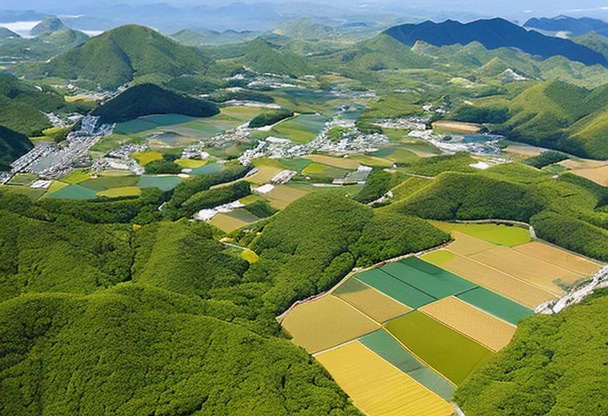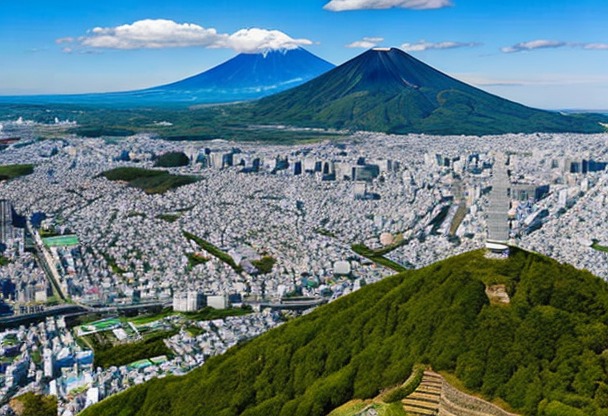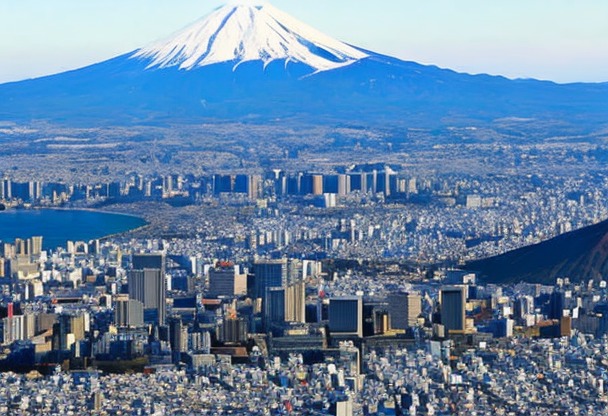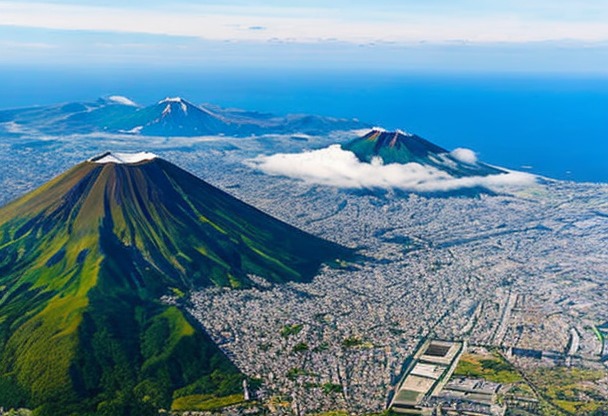WHEN TO TRAVEL TO JAPAN
Choosing the right time for your trip to Japan can make all the difference. It's important to consider weather elements, seasonal events and busy tourist periods to maximize your travel experience.

Location
Climate
Seasons in Japan
As Japan has a temperate climate, there are four distinct seasons:- Springtime (March to May): this is the cherry blossom season, or hanami. Temperatures are mild and the weather generally sunny.
- Summertime (June to August): begins with the rainy season (tsuyu) in June, then becomes very hot and humid in July and August. It's also the time of summer festivals.
- Autumn (September to November): temperatures become pleasant again and the leaves of the trees take on magnificent colors. Many festivals take place during this period.
- Winter (December to February): the weather is cold and dry, with snowfall in some regions. The end-of-year illuminations and New Year's celebrations are a must.
Major cultural events
Japan is rich in cultural events throughout the year. Here are some of the most important:Matsuri (festivals)
THE matsuri are traditional festivals held throughout the country, often linked to a specific shrine or temple. Among the most famous are :- Gion Matsuri Kyoto in July: one of Japan's biggest and oldest festivals, characterized by its huge decorated floats.
- Awa Odori in Tokushima in August: a spectacular dance festival where groups of dancers parade through the streets.
- Kanda Matsuri Tokyo in May: a major Shinto festival with a procession of floats and mikoshi (portable shrines).
Flower seasons
In addition to the famous cherry blossom season (hanami) in spring, other times of the year are marked by the flowering of different plant species:- Shibazakura (phlox flowers) in April-May: they form magnificent pink and white carpets in some parks and gardens.
- Ajisai (hydrangeas) in June: these colorful flowers are particularly popular during the rainy season.
- Koyo (autumn foliage) in October-November: the leaves of maples, ginkgos and other trees take on glowing hues, offering a striking spectacle.
Public holidays and vacation periods
Japan has several public holidays throughout the year, which may influence your choice of travel dates. Some of them are part of the "Golden Week" at the end of April-beginning of May, a week when several public holidays follow one another and during which many Japanese take a vacation. Here are a few important public holidays:- New Year (January 1): New Year's Day is a key moment in Japanese culture, with specific ceremonies and festivities.
- Children's party (May 5): celebrated during Golden Week, this festival is dedicated to children, symbolized by paper koi carp hoisted on masts.
- Culture Day (November 3): this day celebrates Japanese arts and culture, with events and exhibitions held all over the country.
Low and high season periods
To avoidcongestion In order to make the most of your stay in Japan, it is useful to know the low and high season periods:- High season The holiday season: it generally coincides with the Japanese school vacations and the times when weather conditions are most favorable. Spring (March-April) and autumn (October-November) are thus very popular with visitors, as is Golden Week in May.
- Low season Seasonal holidays: winter (excluding the end of the year and New Year's Eve) and the rainy season in June are less frequented by tourists. This can be a good opportunity to discover Japan from a different angle and benefit from lower fares.
Insurance

Your credit card does not cover you in all situations, that is whyIt is essential to take out insurance before you leave to avoid any unpleasant surprises. If you need to see a doctor or be hospitalized, in some countries, medical costs are very high and you will then find yourself having to pay several thousand euros.
Our partner Chapka Insurance proposes the contract CAP ASSISTANCE 24/24 with many essential guarantees.


Flights

Your flight has been cancelled or delayed ?
You may be eligible for a compensation of up to €600 ! For this, lawyers are responsible for handling your claim with the airline and are only paid when the reimbursement is effective.
In conclusion, no financial risk for you, only advantages!
Key immigration figures for Japan
In 2020, the number of foreign residents in Japan reached approximately 2.9 millionThis represents an increase of almost 70% over 2010. Among these foreign residents, here is the breakdown of the main nationalities:- Chinese: approx. 40%
- Koreans: approx. 20%
- Vietnamese: approx. 10%
- Filipinos: approx. 7%
- Brazilians: around 4%
Naturalization rate
As far as naturalization is concerned, there has been a steady increase since the 2000s. Indeed, the number of people acquiring Japanese nationality nearly doubled between 2000 and 2020. However, it is important to emphasize that the rate of naturalization in Japan remains relatively low compared to other industrialized countries.The most popular visas in Japan
Japan's visa system is complex, with many different types of visa for different purposes. Here are the four main categories of visas issued, according to immigration agency statistics:- Work visa representing around 60% of visas issued, this category includes visas for professionals such as engineers, teachers or specialized workers.
- Student Visa With around 25% of visas issued, this category concerns foreign students wishing to pursue higher education in Japan.
- Visa for spouse or child of Japanese national This visa accounts for around 10% of all visas issued, and enables the spouses and children of Japanese citizens to come and live in Japan.
- Cultural activities visa Visas for cultural activities, such as academic or artistic research, account for around 5% of visas issued.
The "Working Holiday" program and temporary visas
In addition to these main categories, there are also other types of visa for temporary stays in Japan. These include the "Working Holiday" program, which allows young people aged 18 to 30 from certain countries (such as the United States) to work in Japan. France, THE Canada or theAustralia) to travel and work in Japan for a period of one year. In addition, visitors from many countries (including most European and North American countries) can benefit from a visa waiver for tourist stays of less than 90 days.International tourism figures for Japan
Japan has been experiencing spectacular growth in its tourism industry for several years now. In 2019, the country welcomed more than 31 million foreign travellersThis represents an increase of almost 250% on 2010.Tourists by nationality
Chinese tourists account for the largest share of international visitors to Japan, with around 40% of the total. They are followed by Koreans (20%), Taiwanese (15%) and Hong Kongers (5%). Visitors from Europe, North America and Oceania account for around 10% of international tourists.Tourist motivations and spending
The main reasons for visiting Japan are to discover Japanese culture, natural landscapes and gastronomy. Foreign tourists spend an average of 1,500 euros per visit, mainly on accommodation, catering and transport.Influx of tourists by month of the year
Japan attracts travelers all year round, but certain months see a particularly large influx of tourists. Here are the three most popular periods:- April : The cherry blossom season (sakura) is very popular with tourists from all over the world.
- July-August : Summer is a great time to travel, especially for Europeans and Americans. Many traditional festivals also take place during this period.
- October-November : Autumn offers colorful landscapes and pleasant temperatures, making it a popular season for visiting Japan.







